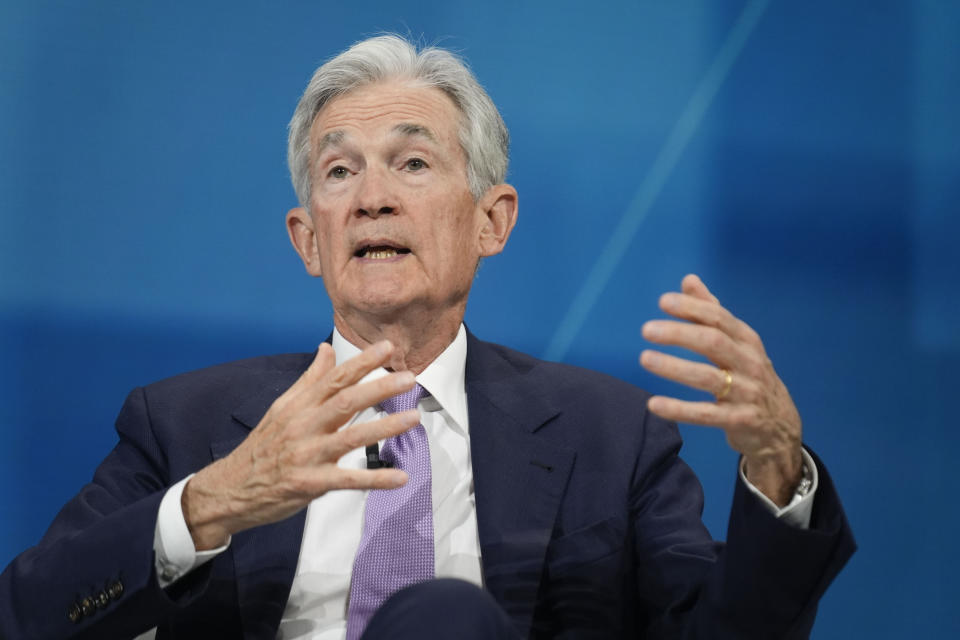For Fed rate watchers, it’s halftime. Nothing’s happening; we might as well get some popcorn. Another pause in interest rate moves was announced on March 19.
The low end of the target federal funds rate has been at 4.25% since before Christmas. Washington and the world are waiting to see what happens next to the economy.
With the Fed on the sidelines plotting its next play, the hope for lower interest rates is fading. The stock market is stumbling around without direction, and interest rates on loans, deposit accounts, and credit cards are looking at Coach Powell for a clue as to where to go.
Still, you have to keep an eye on your money. Here’s how the rate pause is impacting deposits, credit, and debt.
The meager interest you earn on your deposit accounts remains meagerish.
Many checking accounts pay a pittance — pennies on the dollar. The cash is moving in and out — mostly out? — of your account as you pay bills. It’s the convenience of liquidity that limits your earning power.
The national average of interest paid on checking accounts remains at 0.07%.
Interest rates on savings accounts aren’t moving either. The latest average remains at 0.41%. But this is not where savvy savers keep serious money.
High-yield savings accounts have been resilient money havens during the lull. They’re still in the 4% range, with some financial providers slightly above or below that.
This is one category where shopping really pays off.
Dig deeper: 10 best high-yield savings accounts
If you have $10,000 or more that you want to keep on the sidelines but close by, money market accounts have been convenient — but low-paying. Interest nationally averages 0.63%.
Not much point to that.
A better option might be a high-yield money market account, where rates are still near or a little better than 4%.
Read more: 10 best high-yield money market accounts
CD rates have been resilient, moving down just fractionally in recent months. A 12-month CD is averaging 1.78%, but you can find better deals if you’re willing to take the time to hunt them down — and park your money in a bank that may not be in your city.
Your minimum deposit and term will affect your rate.
Learn more: The best CD rates on the market
Mortgage rates have been the most stubborn of all. Home loan rates actually rose following the first Fed rate cut in September. Analysts said the Fed move was already “priced in” to mortgage rates.
Home loan rates are still lingering in the mid-6% range.
Thing is, the Fed’s manipulation of overnight interest rates charged to banks doesn’t directly steer mortgage rates. Those are more influenced by the bond market, particularly the 10-year Treasury note. The bond market reacts to forecasts for economic growth — or the lack of it.
It will take more than incremental Fed interest rate reductions to bring down mortgage rates. Bad economic news can move rates down, such as a resurgence of inflation or a surprise recession. But who is hoping for that?
Housing industry analysts with the Mortgage Bankers Association, Redfin, Realtor.com, and Zillow expect mortgage rates to remain in the 6% to 7% range through 2025.
Dig deeper: When will mortgage rates go down? A look at 2025
Personal loan interest rates have been hovering in the 12% range for well more than a year. They were around 9.5% for three years, from 2020 to 2022. Like mortgage rates, it will take time for them to get close to that again.
Credit card interest impacts everyone — except those who pay off their balance each month.
Of course, that’s a good thing to aim for, but in the meantime, c’mon, Fed, give us a break. Credit card rates have spiraled from around 15% in 2021 to over 21% in 2024.
There is still no post-Fed rate hike data available on average credit interest, but it is one place where we can hope for relief. One day.
Dig deeper: What credit card users need to know about the Fed’s latest rate cut
Yahoo Finance tip: The best way to earn a lower credit card interest rate right away is to ask. If you make regular payments and have seen your credit score improving, it’s a good time to call your credit card provider and ask for a lower interest rate.
Stock prices often react to the Fed’s rate actions, but they are only one factor among many affecting the investing climate and stock prices.
If you intend to manage your investments to suit the current environment, keep watch on broader economic and corporate profit trends alongside interest rates. If you prefer to stay conservative, fill your portfolio with high-quality stocks that have proven themselves in all economic cycles.
Then, wait patiently for long-term growth.
Yahoo News – Latest News & Headlines
Read the full article .


